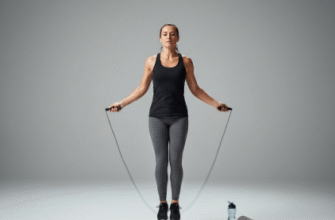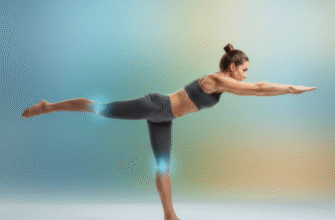That little ping. The constant vibration in your pocket. The endless scroll promising just one more interesting thing. Sound familiar? In our hyper-connected world, the digital realm often feels less like a tool we control and more like a current pulling us under. We’re always on, always available, always consuming. But this constant barrage comes at a cost – our focus gets fractured, our real-world connections fray, and a persistent sense of overwhelm can creep in. The good news? There’s a powerful antidote: setting regular digital boundaries.
Think of digital boundaries as intentional lines you draw around your technology use. They aren’t about ditching your devices entirely or becoming a Luddite. Instead, they’re about consciously deciding when, where, and how you engage with the digital world to better serve your well-being, productivity, and relationships. It’s about taking back the reins and using technology purposefully, rather than letting it dictate your time and attention.
Reclaiming Your Focus in a Distracted World
One of the most immediate and tangible benefits of establishing digital boundaries is the return of focus. Constant notifications, the lure of social media, and the ease of switching tasks online train our brains for distraction. We hop from email to chat to newsfeed, rarely settling into the deep, concentrated work required for complex tasks or creative thinking. When you designate specific times for checking emails or silencing notifications during focused work blocks, you create an environment where concentration can flourish. Suddenly, that project you’ve been procrastinating on seems less daunting, and your ability to think critically and solve problems improves significantly. It’s like quieting a noisy room – you can finally hear yourself think.
This reclaimed focus isn’t just about work, either. It extends to hobbies, learning new skills, or simply being present in a quiet moment. When you’re not reflexively reaching for your phone during lulls, you create space for boredom, which surprisingly, is often the birthplace of creativity and introspection. Setting a boundary like “no phones during the first hour of the morning” allows you to start your day with intention, perhaps with journaling, exercise, or quiet contemplation, rather than immediately plunging into the digital stream.
Better Sleep and Brighter Mornings
The glow of screens late at night is a well-known disruptor of sleep patterns. The blue light emitted can interfere with melatonin production, the hormone that signals your body it’s time to wind down. But it’s not just the light; the content itself – stimulating news articles, engaging social media feeds, urgent work emails – keeps your mind buzzing when it should be relaxing. Implementing digital boundaries around bedtime is crucial for better rest.
Consider these simple but effective boundaries:
- No screens an hour before bed: Replace scrolling with reading a physical book, listening to calming music, or light stretching.
- Charge devices outside the bedroom: This removes the temptation to check notifications if you wake up during the night.
- Use night mode or blue light filters: If screen use before bed is unavoidable, these features can lessen the impact.
Consistently applying these boundaries can lead to falling asleep faster, experiencing more restorative sleep, and waking up feeling genuinely refreshed, not groggy and immediately reaching for a digital fix.
Nurturing Real-World Connections
How often have you been physically present with someone, yet mentally miles away, absorbed in your phone? It’s a common scenario, and it subtly erodes the quality of our relationships. Meaningful connection requires presence – active listening, eye contact, and genuine engagement. Digital boundaries help protect this vital aspect of our lives.
Setting rules like “no phones at the dinner table,” “device-free date nights,” or “putting the phone away during conversations” signals to others that you value your time with them. It fosters deeper conversations and strengthens bonds. It’s about prioritizing the person in front of you over the potential notifications buzzing in your pocket. This intentional presence makes interactions richer and more fulfilling, reminding us of the unique value of face-to-face connection that no amount of digital interaction can replicate.
Small Steps, Big Impact
Starting with digital boundaries doesn’t require a complete overhaul. Small, consistent changes can yield significant results. Maybe it’s choosing one app you spend too much time on and setting a daily limit. Perhaps it’s dedicating your lunch break to be screen-free. Or simply turning off non-essential notifications. The key is identifying areas where digital creep impacts you most and setting a clear, achievable boundary.
Be Patient and Consistent. Setting new habits takes time, and digital boundaries are no exception. There will be days you slip up; don’t get discouraged. The goal is progress, not perfection. Gently redirect yourself back to your boundaries and remember why you set them in the first place. Consistency over time is what truly builds resilience against digital overload.
The internet offers an infinite stream of information, opinions, and curated glimpses into others’ lives. While valuable, this constant influx can lead to information overload, anxiety, and the draining habit of social comparison. Digital boundaries act as filters, allowing you to be more selective about the information you consume.
Turning off news alerts, unfollowing accounts that consistently make you feel inadequate, or scheduling specific times to check social media rather than scrolling passively throughout the day can significantly lighten your mental load. It creates breathing room, allowing you to process information more thoughtfully and reducing the feeling of constantly needing to keep up. It’s about curating your digital environment to support your peace of mind, rather than detract from it.
Making Boundaries Work for You
The most effective digital boundaries are personalized. What works for one person might not work for another. Reflect on your own technology use and its impact.
- Identify Pain Points: Where does technology cause friction? Is it late-night scrolling? Constant work emails after hours? Feeling distracted during family time?
- Set Specific Goals: Instead of a vague “use my phone less,” try “no phone use between 9 PM and 7 AM” or “check social media only twice a day for 15 minutes.”
- Use Tech Tools (Ironically): Many devices have built-in features for setting app limits, scheduling downtime, or tracking screen time. Use these to your advantage.
- Communicate Your Boundaries: Let family, friends, and colleagues know about your boundaries, especially if it affects response times (e.g., “I check work email only during work hours”).
- Experiment and Adjust: Review your boundaries regularly. Are they working? Are they too restrictive or too lenient? Adjust as needed.
Ultimately, establishing regular digital boundaries is an act of self-care and intentional living in the modern age. It’s not about rejecting technology but harnessing its power thoughtfully. By drawing these lines, you reclaim valuable time, deepen your focus, strengthen your relationships, improve your sleep, and cultivate a greater sense of peace and presence in your daily life. It’s about making technology serve you, not the other way around.









